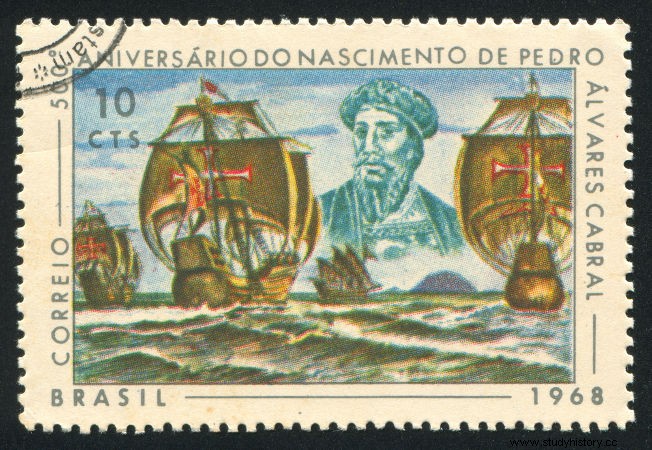
The period that began in 1500 with the arrival of Pedro Álvares Cabral to Brazil and it was until the mid-1530s with the creation of the hereditary captaincy system it is called by many historians the pre-colonial period due to the absence of colonizing policies in Portugal and a program of population occupation in Brazil. The economic exploitation of this period was based on the extraction of pau-brasil and the installation of trading posts on the Brazilian coast.
Background
The arrival of the Portuguese in Brazil was primarily related to the process of consolidation of the Portuguese monarchy from its autonomy in relation to Spain. In addition, throughout the 15th century, the action of the Infante Dom Henrique stood out, who encouraged Portuguese maritime expansion through the Escola de Sagres .
In addition, the performance of the Portuguese mercantile bourgeoisie stood out, who saw maritime navigation as a way to expand their business and the prospect of new income for the Portuguese Crown. Finally, for the sailors, the expeditions were a good prospect of enrichment.
Before arriving in Brazil, Portuguese expeditions gradually accomplished great things and reached new places throughout the 15th century. The highlights were the arrival of the Portuguese to Madeira Island and the discovery of a maritime route in which Portuguese ships could circumvent the African coast. As a result, commercial outposts were set up in regions of the African and Asian coasts.
Arrival of the Portuguese in Brazil
The arrival of the Portuguese in Brazil took place officially in the expedition led by Pedro Álvares Cabral, who left Lisbon with thirteen vessels. The purpose of Cabral's expedition was to reach India and its valuable trade in spices (luxury goods), which were valuable products in Europe because of their rarity.
The debate on the intentionality of Pedro Álvares Cabral's arrival to Brazil is considered by historians as secondary. However, there are historians who claim that Cabral's expedition arrived in Brazil by chance, when it deviated from its original route after a storm. Others claim that Cabral's expedition intentionally deviated from the route. The fact that matters is that Pedro Álvares Cabral's expedition arrived in Brazil on April 22, 1500.
The arrival in Brazil did not cause as much commotion in Portugal as when they reached India. The Portuguese lack of interest was demonstrated by the policy adopted in relation to Brazil:as on the African coast, the Portuguese encouraged the construction of factories .
Feitorias were basically Portuguese trading posts where Portugal's mercantile activities were concentrated. In the first three years, this function was given to Fernão de Noronha, however, from 1505 onwards, Portugal began to directly control the installation of trading posts. As Brazil was a land of unknown possibilities and as trade in India was highly profitable, Portugal chose to explore the only commodity that appeared to be profitable at first:pau-brasil.
The brazilwood wood had a red color, which was used in the production of fabric paint. In addition, the wood was considered of good quality and was used in the construction of caravels. This exploration was carried out in partnership with the natives, who extracted the pau-brasil and were paid by the Portuguese with trinkets:fabric, knives, mirrors and other objects that had no value for the Portuguese, but were new to the indigenous people.
The trading posts installed on the coast of Brazil also had the function of protecting the Brazilian coast from foreign invasions. It is important to consider that the American continent had been divided between the Portuguese and the Spanish after the Treaty of Tordesillas. However, some countries, such as France, did not accept being excluded from the territorial division and, thus, did not respect the Spanish and Portuguese domains.
Hereditary captaincy system
The decline of trade with India and the French threat to Portuguese territory led the Portuguese Crown from 1535 onwards to implement a new colonization policy with the installation of the hereditary captaincies . The system consisted of dividing Brazil into fifteen plots of land and assigning the exploitation of these to third parties. The hereditary captaincy system also introduced a new economic cycle in Brazil and ended the pre-colonial period.
*Image Credits:Rook76 and Shutterstock
Take the opportunity to check out our video lesson related to the subject:
